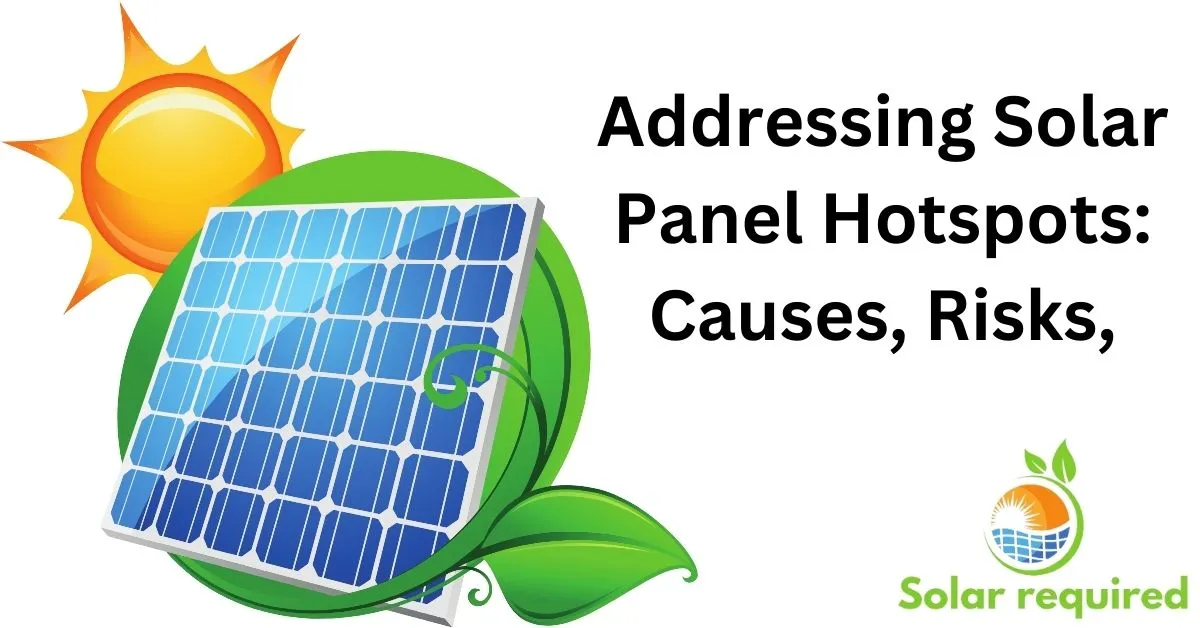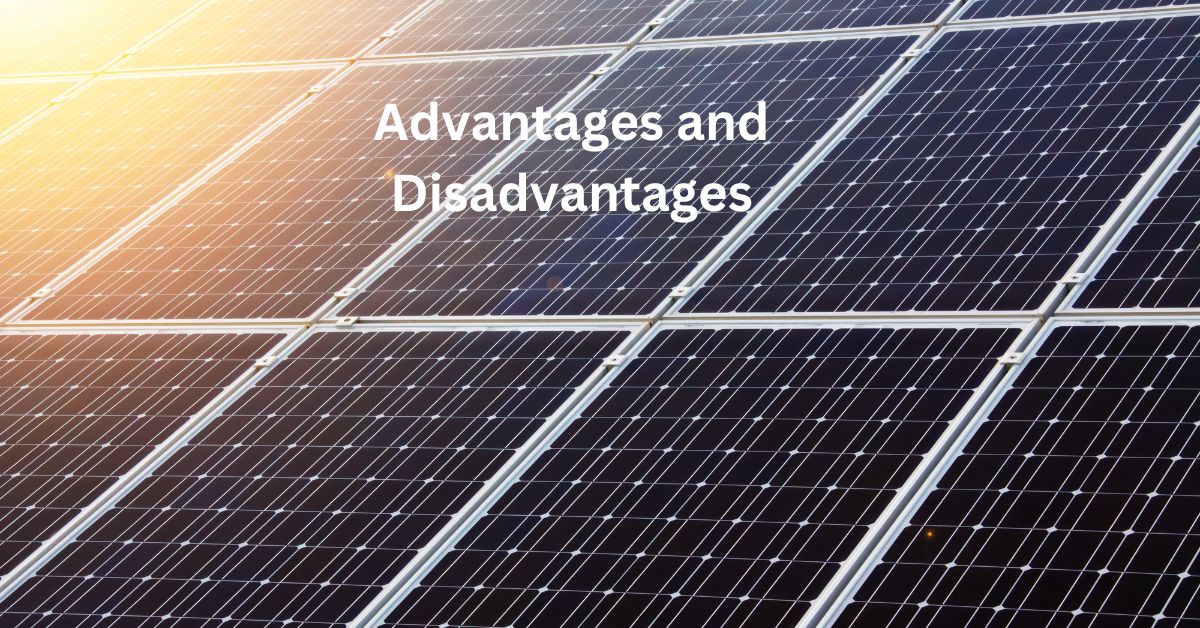Solar Cell Hotspots
Solar panel hotspots are areas of high temperature on a solar panel. They occur when one or more cells in the array underperform. This imbalance can cause large efficiency losses. In severe cases, it can physically damage the solar panel. Understanding solar panel hotspots’ natural causes and fixes is crucial. This knowledge is vital for installers, technicians, and homeowners. It ensures solar power systems last and works well.
Causes of Solar Panel Hotspots
Shading on a solar panel
One frequent reason is shadowing even a tiny shade can generate hotspots on a solar panel. This happens because of the darkened cells’ resistance. They release energy as heat. Cell mismatch occurs when one or more cells in a panel perform less well than the others. It is another reason. This imbalance causes potential hotspots and localized heating.

Solution
To avoid hotspots from these things & shading do a site evaluation before installing solar panels. This evaluation involves assessing the potential shade patterns throughout the day and year. You can mitigate hotspots by identifying and avoiding areas with shading. Also, using bypass diodes can help bypass shaded or underperforming cells. This prevents hotspots.
Manufacturing flaws
Moreover, manufacturing flaws may also cause solar panel hotspots. Faults like bad solder joints or poorly connected cells can lead to resistance. They cause overheating. Hotspots can also come from poor installation. This can be from bad wiring or not enough ventilation. Installers of solar panels must follow best practices. This reduces the chance of hotspots.
Mismatch in solar
Mismatched circumstances may arise from variations in the electrical properties of photovoltaic cells. These variations result from differences in manufacturing or from deterioration. Excess heat may result from a cell’s ability to resist current more than another.
Defecating
Dust, debris, or snow on the solar panels can block sunlight. This might cause hotspots in the shaded areas.
Risks Associated with Panel Hotspots
Hotspots for solar panels can harm a photovoltaic system. They hurt its longevity and overall performance in many ways. The deterioration of solar cells is one of the primary dangers. Excessive localized heating causes cell breakdown.
This can lower cell production and efficiency. This decay may shorten the solar panels’ lifespan. It also hurts energy generation. Potential fire dangers are another risk. The heat from hotspots can harm nearby materials.
These include the encapsulating material or the back sheet. This heat buildup may cause thermal runaway and ignite a fire if it is not dispersed.
Hotspots can also affect the reliability of the entire PV system. As cells perform worse the system performs worse too. This can lead to less energy production. It can cause financial losses for solar panel owners. Also, hotspots can harm the reputation of solar panel makers and installers. This highlights the need for proactive steps to stop and fix hotspots.

Identifying Solar Panel Hotspots
Finding hotspots for solar panels is essential. You need to identify them for quick fixes. The use of thermal imaging cameras is one efficient way to locate hotspots. The cameras can spot temperature differences in the solar panels. This helps identify hotspots. You can find hotspots early by routinely doing thermal imaging. This cuts the hazards of hotspots.
Analyzing the performance data from the PV system is another way to find hotspots. Monitoring systems can offer insight. They show how well solar cells and panels are performing.
You can find any inconsistencies or gaps in this data by evaluating it. This evaluation will show that hotspots are present. Proactive hotspot detection requires regular performance data analysis and monitoring.
Inspections are visual. They can find hotspots. They also use thermal imaging and data analysis. You can find hotspots by physical indicators. These include discoloration, burn marks, or melted components. Frequent visual checks can help find hotspots early. They also aid other detection techniques.

How to Prevent Hotspots?
Keeping solar cell hotspots under control is vital. It’s crucial for preserving PV systems’ longevity and functionality. Appropriate system design is one of the best preventive methods. It is crucial to prevent shading on solar panels. Shading makes hotspots more likely in cells. You can reduce hotspot danger. Do this by picking a good spot. Then, align the panel to block the most sun.
Proper system maintenance is another important preventive measure. We also give maintenance services. Regular cleaning of the solar panels helps remove any debris or dirt that may cause shading. Also, keeping air flowing around the panels helps to dissipate extra heat. You use a high-quality solar panel backsheet. This reduces the chances of hotspots. Inspections are routine. They cover the system including wiring and connections. They can find issues that may cause hotspots.
The use of bypass diodes is an effective preventive measure for solar cell hotspots. Bypass diodes enable bypassing shading or underperforming cells. This prevents hotspots. These diodes redirect the flow of current ensuring that the cells are not subjected to excessive heat buildup. Adding bypass diodes to the PV system design can greatly cut the risks of hotspots.
Easy solution for Hotspots
As soon as you discover hotspots in a PV system you need to fix the problem. A possible solution could be to swap out the damaged solar panels or cells. Swapping out the underperforming or darkened cells can reduce the risk of hotspots. It works better for systems with individual cell or panel designs.

This is because it allows for targeted replacements. Rearranging the solar panels’ wiring is another solution. You can avoid hotspots by improving the current flow. Do this by moving electrical connections. To ensure correct wiring and connections this method might need professional assistance.
Also, cooling tech can fix solar panel hotspots well. Devices like active cooling systems or heat sinks can dissipate extra heat. They also prevent hotspots. You can add these cooling solutions to a PV system’s design. Or, you can add them to existing systems later. However, you should also consider the added costs and energy needs of these cooling methods.
As more people turn to solar energy, knowing the risks and safety steps is key. This includes installing and maintaining solar panels. We’ll cover important steps to take after buying solar panels in 2025.
Case Studies
One example is a commercial solar farm. It has large efficiency losses due to hotspots. The operators eliminated the hotspots and restored the system’s performance. They did this by finding underperforming panels and moving the electrical load. They did this through retrofitting and thermal imagery.
Another case involved using micro-inverters in a home. The home was in a forested area. They used them to reduce the effects of frequent shade. This method enabled each panel to function alone. It reduced hotspots’ frequency and increased the system’s energy yield.


